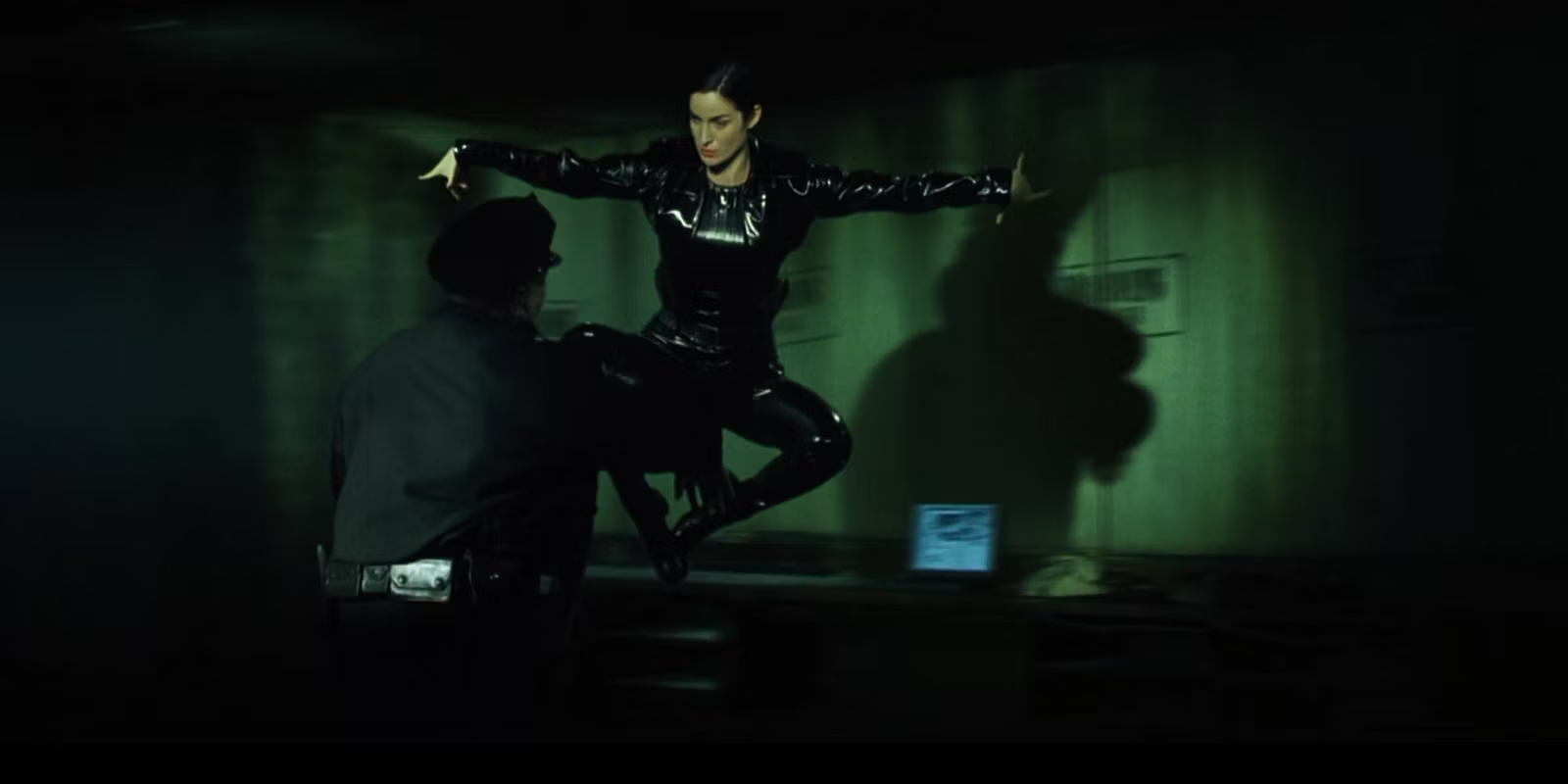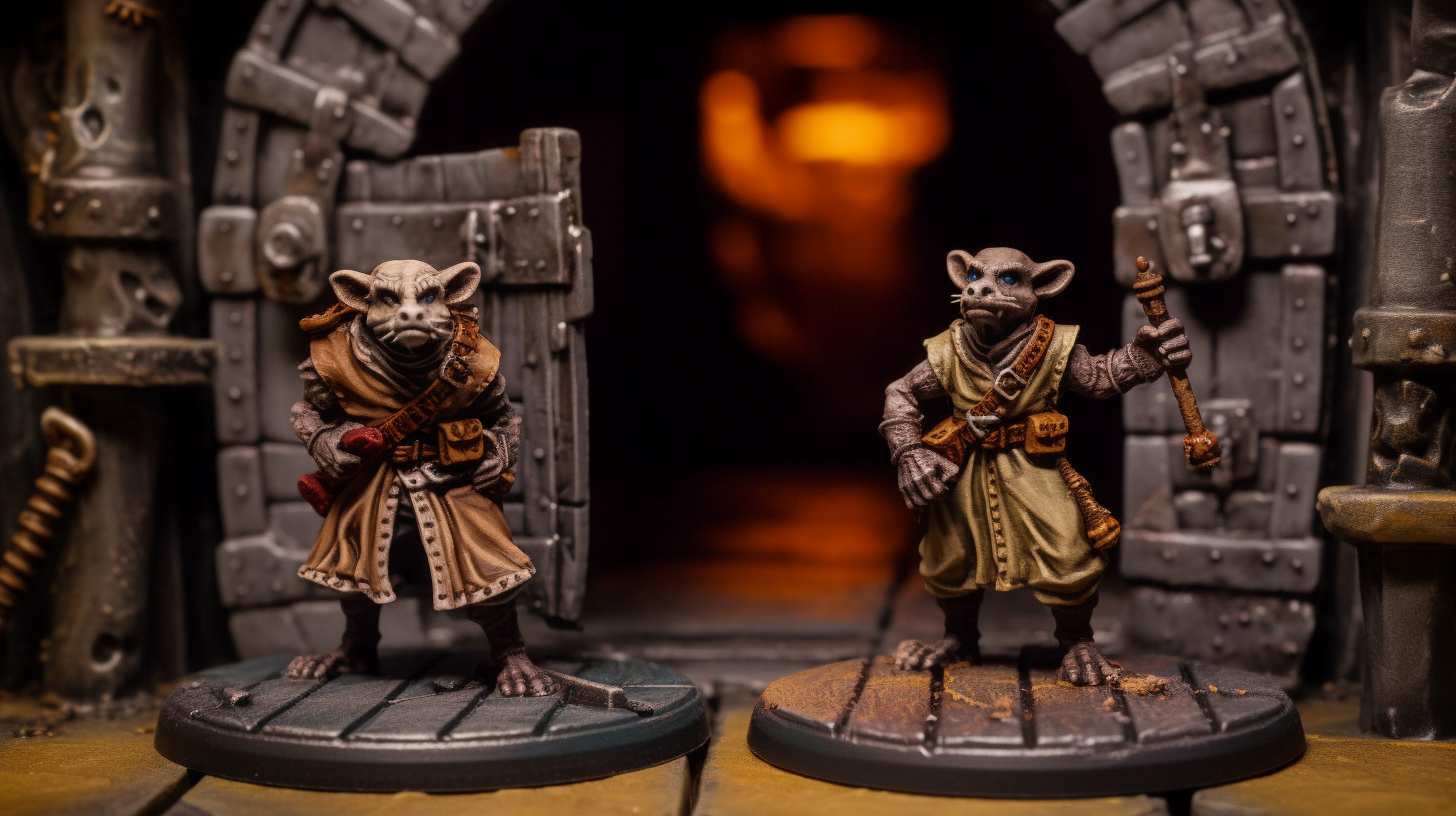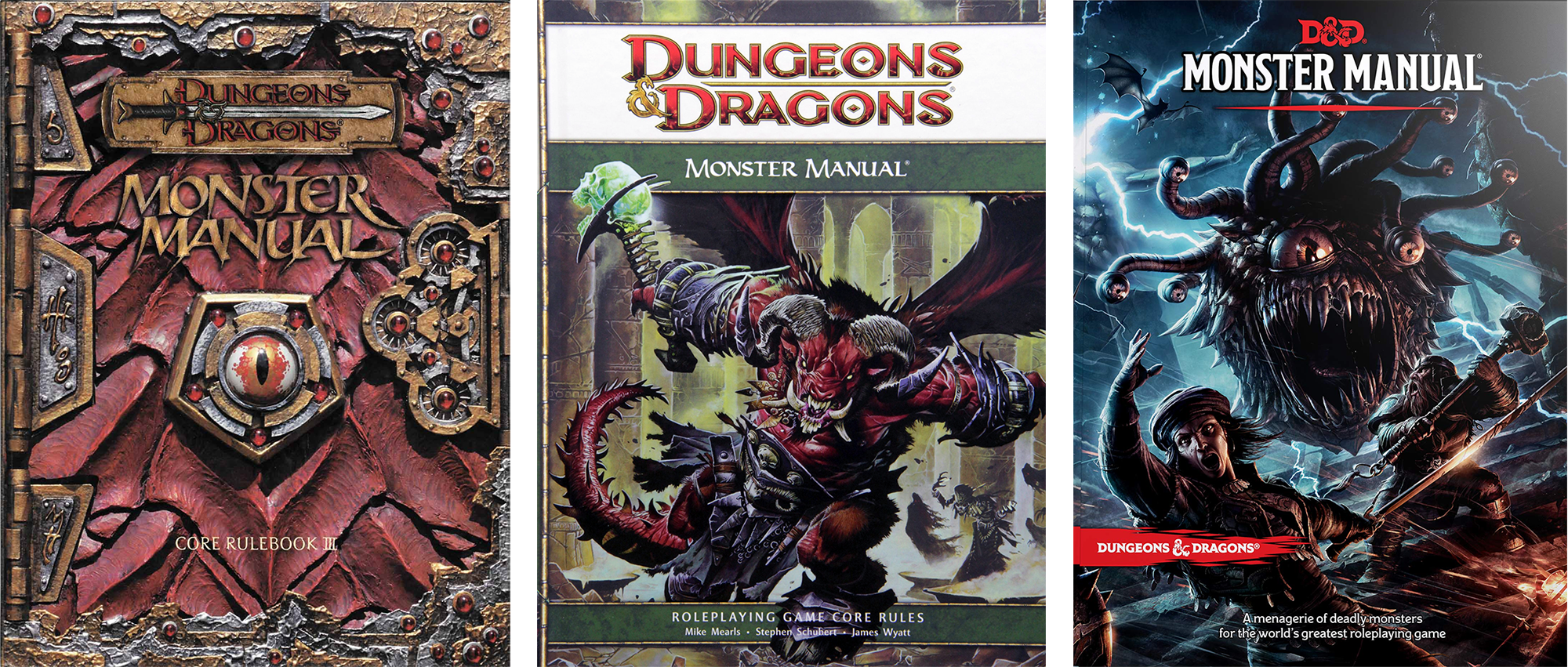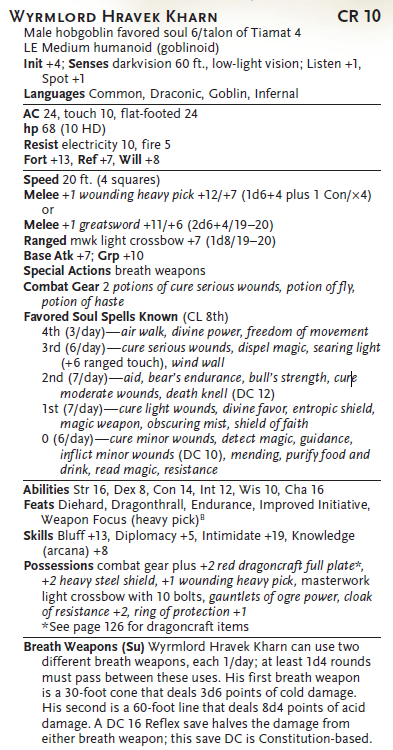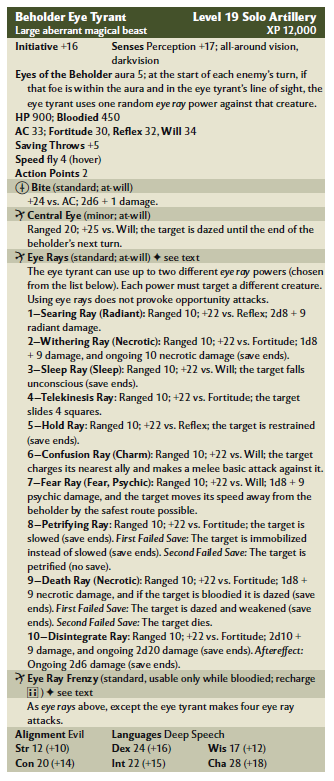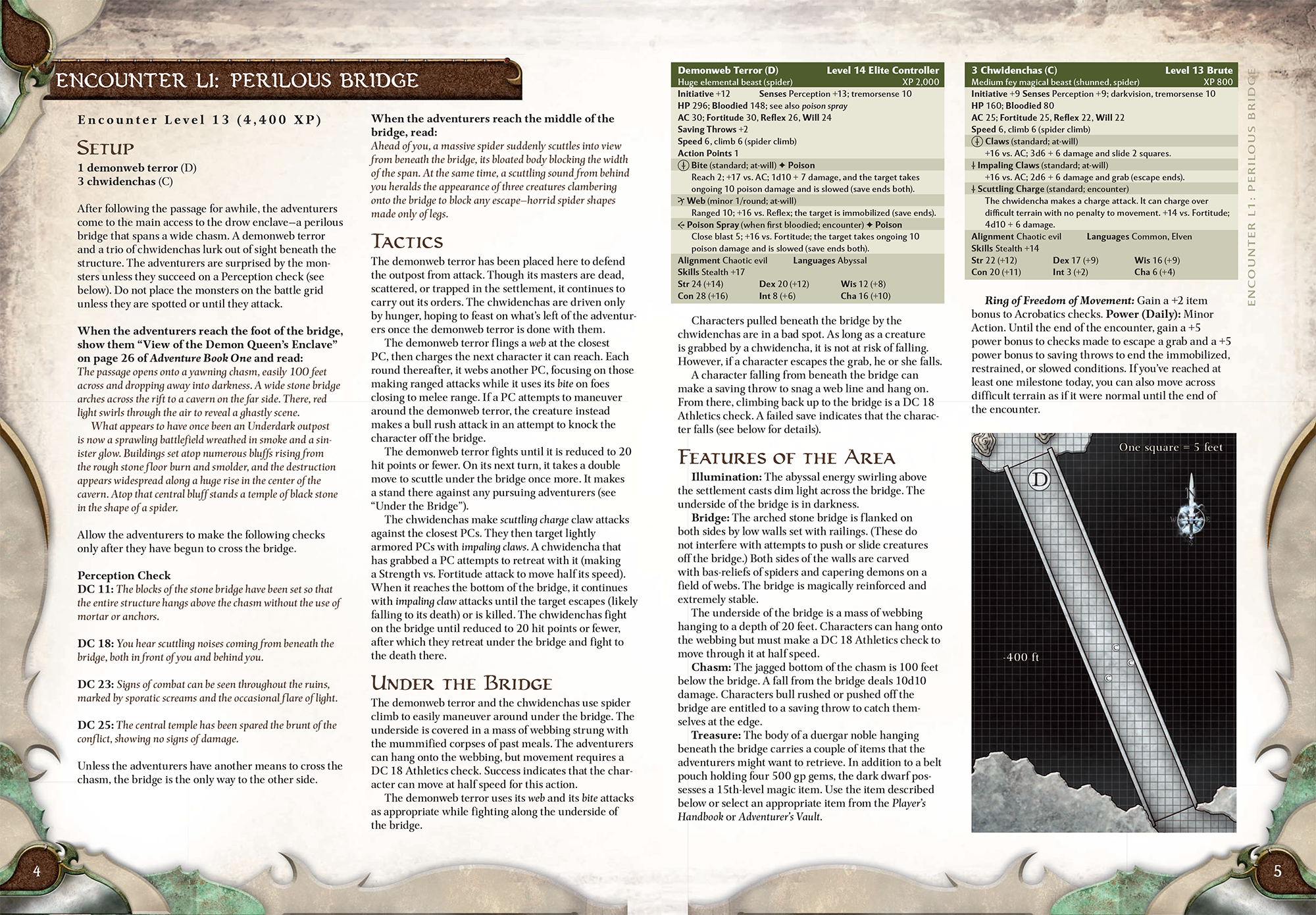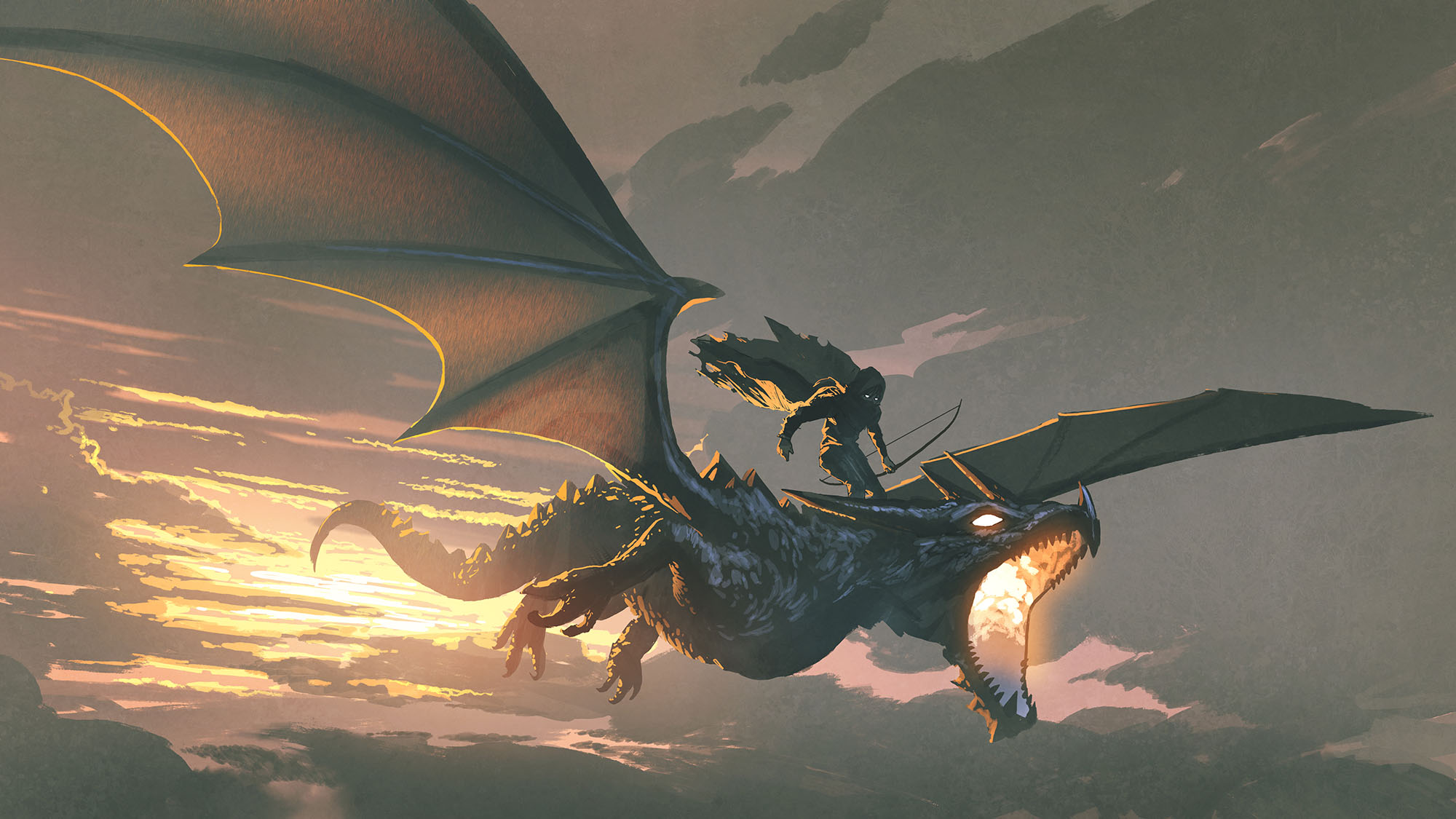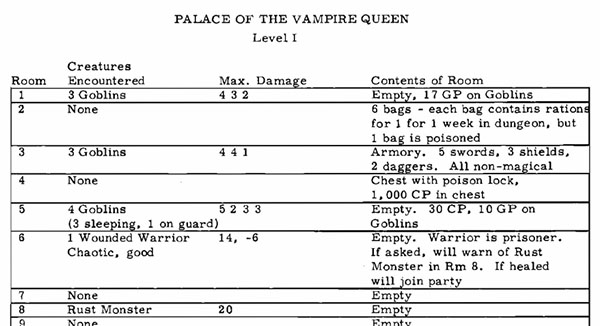There are literally thousands of RPGs. I, personally, own hundreds of them. So, obviously, I’m not going to attempt to catalogue every single stat block that has ever existed, but I think it might be useful to take a step back from D&D’s paradigm and look at how other games have approached this problem.
Sufficiently simple games, of course, can largely sidestep it entirely. It’s not unusual to find an RPG where NPCs are entirely defined by just two or three numbers. In some player-facing systems, many NPCs may not have any stats at all!
Although it can be somewhat obfuscated, the 1974 edition of D&D more or less fell into this paradigm. Most combat stats were derived from Hit Dice, and so for most monsters the only relevant stats were:
- Armor Class
- Move
- Hit Dice
Even in Monsters & Treasure (the 1974 version of the Monster Manual), this allowed monsters to be presented in purely tabular format:
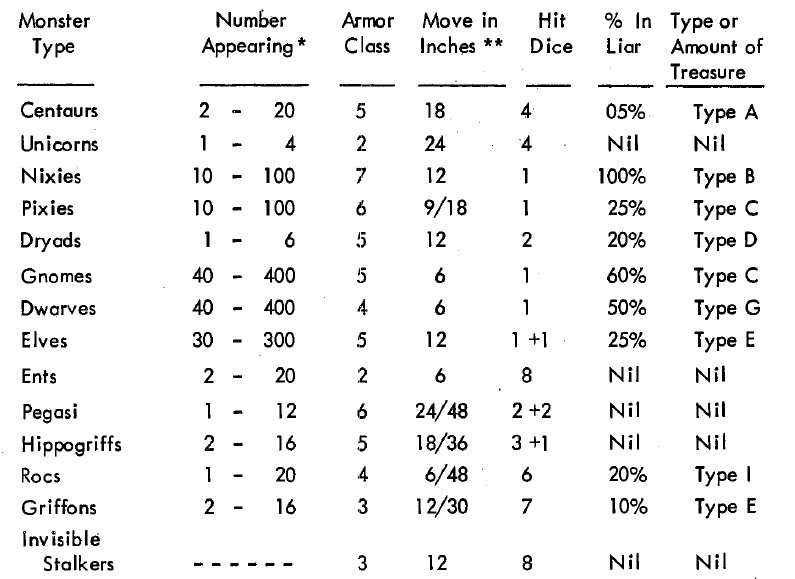
In practice, special abilities and exceptions in each monster’s description complicate the placid simplicity projected by this table for many creatures, but this is an approach which has been more coherently synthesized in recent games.
In Over the Edge 3rd Edition, for example, Jonathan Tweet, another co-designer of D&D 3rd Edition, created a system in which NPCs can be given a complete stat block with a single number:
- Sub-Par (0)
- Competent (1)
- Expert (2)
- Elite (3)
- World Class (4)
- Superhuman (5)
Important NPCs, however, can be given additional specialties and abilities that operate at a higher tier:
MADELINE VORE
Business Leader, Elite (3rd): Madeline has an easy and firm grasp on how to create and leverage brand for maximum profit and how to run the enterprise that does so.
Energy Vampirism, Expert (2nd): With a touch, Madeline can drain the life energy of a human and save it for herself, extending her life and restoring vigor.
DEFAULT, COMPETENT (1st)
Monte Cook’s Numenera is another game that takes this approach, with stat blocks like this:
Warlord: level 4
Reugar Darkglow: level 3, tasks related to metalworking as level 5
Nieten: level 4, attacks with stronglass sword as level 5; health 20; Armor 1
Dread Rider: level 4, Might defense as level 6; health 15; damage 6 (4 blade, 2 electricity); Armor 3
Lightning Storm: Immune to electricity and +2 electricity damage. Others in immediate range suffer 1 damage per round.
Recall: Teleport to nearest dread destroyer.
Summon: Summon dread destroyer (arrives within a few hours).
Death Trigger: If slain, dread destroyer is summoned.
I refer to these as fractal NPCs: A simple default, but with the ability to add as much complexity, specificity, and crunch as desired when the occasion calls for it.
At the other end of the spectrum, of course, we have crunchier systems where NPCs have a ton of detail baked in by default. There are a lot of reasons why a system might want (and benefit from) this crunch, but a very common are systems where NPCs and PCs are built using the same rules. (And, therefore, all the complexity of creating a PC is inherited by the NPC stats.)
Like D&D, it’s not unusual for these crunchier systems to simply give up on the idea of a concise stat block. In The Succubus Club, for example, Vampire: The Masquerade just threw its hands up and printed the NPCs using full-blown PC character sheets:
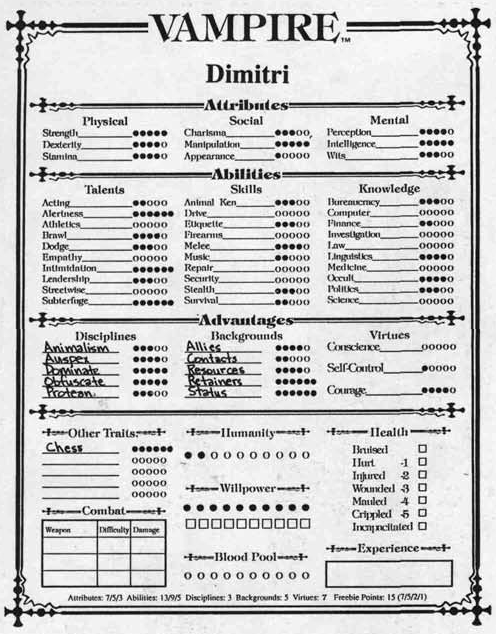
It’s more typical, however, for crunchier systems to still try to achieve some degree of compactness, as seen in this stat block from GURPS Fantasy Adventures:

This relative compactness is often achieved by relying on some degree of system mastery: The spells, advantages, and disadvantages are all simple lists, requiring the GM to look up the rules for each individual feature. This is incredibly effective if the GM is familiar enough with the rules to know what, for example, Magery 2 means without looking it up, but brutally punishing to a new GM who has to look up a dozen or more abilities just to figure out what the NPC’s options are.
To square the difference, the designer can attempt to anticipate which abilities the GM is least likely to be familiar with and/or which abilities are relevant to the current encounter and provide a more detailed reference only for those abilities. For example, Literacy, Charisma +2, Compulsive Liar, and Greedy are probably all relatively self-explanatory, so maybe we can just focus on explaining what Voice and Magery 2 mean.
This is what I refer to as a hierarchy of reference. If you’re a GM doing this for yourself, it can be time-consuming but relatively straightforward (and very useful!). After all, you know exactly what information you do and don’t know. If you’re doing it for a published book, on the other hand, it’s often far trickier. You can’t even really target a specific level of system mastery, because every GM will learn different parts of the system in different ways and at different times. It can even be deceptive. (Compulsive Liar and Greedy look like roleplaying prompts, particularly if no further explanation is given. Did you remember to make the Will rolls they require?)
The other technique, of course, is to find ways to condense the presentation of the information. We saw variations of this earlier with the AD&D and BECMI D&D stat blocks. When Wizards of the Coast redesigned the D&D 3rd Edition stat block in 2006, I thought their utility-based division was nifty, but the specific execution too large, so I revised the stat block into a short form that required a fraction of the space:
NAME (CR #) – [Gender] [Race] – [Class] [Level] – [Alignment] [Size] [Type]
DETECTION – [special], Listen +#, Spot +#; Init +#; Aura …; Languages [list], [special]
DEFENSES – AC #, touch #, flat-footed #; hp # (HD); Miss #%; DR #; Immune …; Resist …; Weakness …
ACTIONS – Spd # ft.; Melee attack +# (damage); Ranged attack +# (damage); Space # ft.; Reach # ft.; Base Atk +#; Grapple +#; Atk Options …; SA …; Combat Feats …; Combat Gear …
SQ …
STR #, DEX #, CON #, INT #, WIS #, CHA #
FORT +#, REF +#, WILL +#;
FEATS:
SKILLS:
POSSESSIONS:
Which could be combined with short references for pertinent abilities (and, when in doubt, page references for quickly looking up for the full rules when necessary).
This approach of condensation also requires a certain degree of mastery, but this time only of how the relatively dense stat block is designed to be read. (As opposed to every unique ability in the entire game.)
And, of course, these two techniques for dealing with crunchy stat blocks can also be used in combination — both compacting the information and also making decisions about which abilities need to be fully described.
IN CONCLUSION
So when it comes to stat blocks, there are broadly two approaches you can take.
First, you can choose to design your system to make the presentation of adventure stat blocks more compact, which often also has the effect of making them easier for GMs to create, particularly on-the-fly when something unexpected happens in the middle of a session.
Or you can try to figure out some way to condense the presentation of information, often relying (to at least some extent) on the GM’s system mastery to help carry the load.
Or you can just give up and tell people to look it up. If you’re feeling really apathetic, you can do that without even the common courtesy of a page reference.
This article is a revision and expansion of an older article. The original version can be found here.

